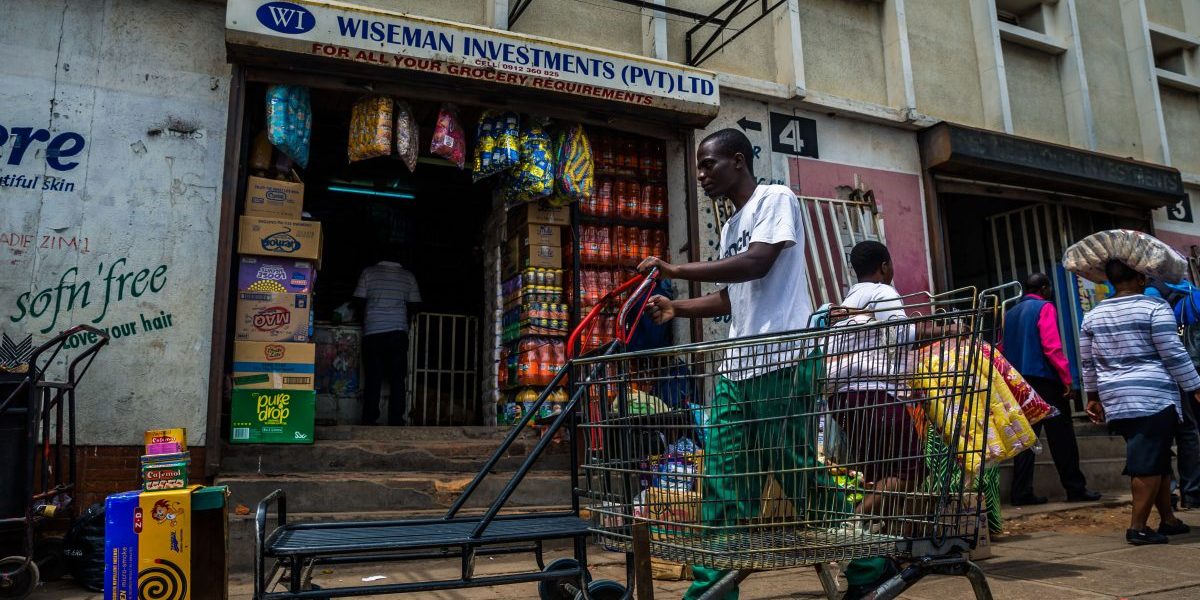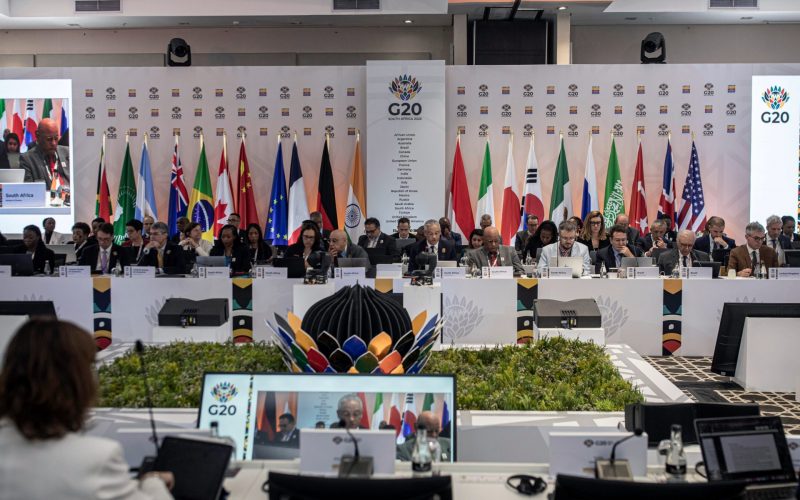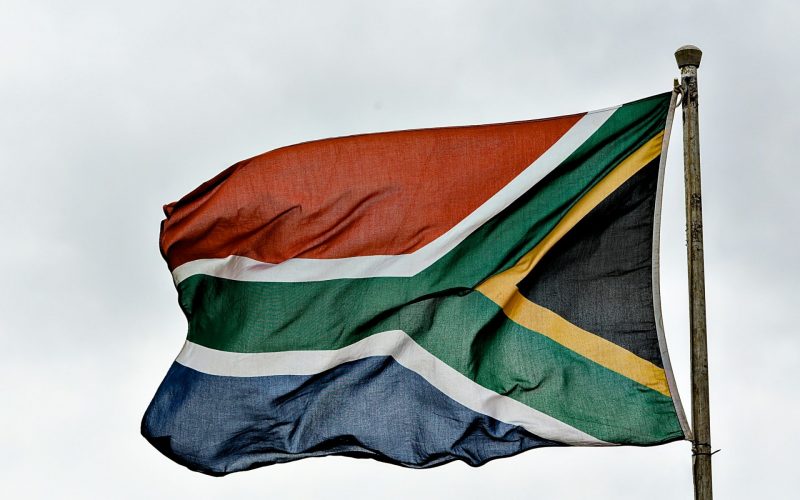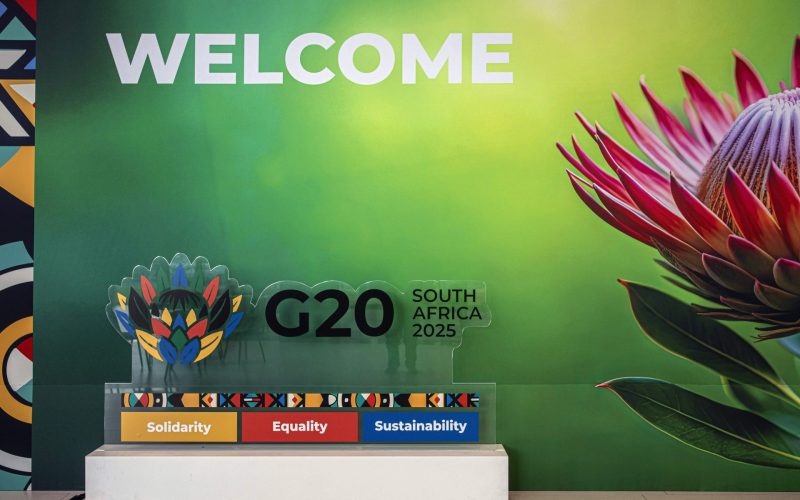Recommendations
The following reforms are likely to pave the way for the CwA in Zimbabwe:
- A genuine reform attitude: the Zimbabwean government seems to lack a genuine reform
culture. - Policy reforms: the Empowerment and Indigenisation Act and The Land Reform Act need to be
investor friendly. - Clearance of multilateral debt arrears: the sanctions rhetoric seems to have taken the centre
stage ahead of reform implementation. This behaviour has promoted corruption and stands in
the way of reforms; hence there is no CwA for Zimbabwe.
Executive summary
As a reform strategy, the G20 Compact with Africa (CwA) framework has the potential to support Zimbabwe’s economic transformation agenda. It is relevant to both the re-engagement agenda and the Transitional Stabilisation Programme (TSP) to turn around the Zimbabwean economy. Yet despite its relevance, the compact has failed to raise enthusiasm among Zimbabwean policymakers, and few economic stakeholders are aware of it. Several factors are responsible for this status quo. First, the government is desperate and preoccupied with finding a quick solution to the economic crisis, and the compact does not seem appropriate for this. Second, there is no reform culture among the cohort meant to be the custodians of reforms. Third, multilateral debt has prevented any potential inroads with the international organisations involved with the compact. Lastly, the Chinese, who are pushing a bilateral agenda, have occupied most of the attractive economic space.
Introduction
Zimbabwe’s economy has been on a downward spiral for the last four decades. Even though the period of the Government of National Unity, from 2009–2013, resulted in some stability, the economy relapsed to its former negative trajectory immediately thereafter. As a result, unemployment rose to well over 70% and gross domestic product (GDP) was recorded at $31,001 million in 2018 – in terms of GDP globally, it ranked 100 out 160 countries.1 The economy continues to decline.2 The sectors most affected appear to be manufacturing and agriculture. The former continues to experience diminished and belowcapacity utilisation and infrastructure dilapidation, as well as depletion of capital stock. The latter is not faring any better, as agricultural output has dropped sharply. In spite of this, the mining sector remains viable.3
Zimbabwe’s economic woes are multi-faceted. They are the result of a combination of factors, including economic mismanagement, chaotic land reform, indigenisation policies, political instability and fiscal mismanagement driven by corruption.4 To address these challenges, the Zimbabwean government adopted the Zimbabwe Agenda for Sustainable Socio-Economic Transformation (ZIM-ASSET) in 2013, which was the economic transformation policy framework for 2013 2018.5 Central to ZIM-ASSET was the agriculture sector. The command agriculture programme6 emerged as a vehicle to achieve ZIM-ASSET’s targets.7 Lacking a detailed policy framework and execution, ZIM-ASSET did not turn around the economy. The funding strategy of the command agriculture programme was ambiguous. Tainted by allegations of corruption, its success is obscure. In October 2018 the Second Republic ushered in the TSP 2018–2020 to change the economic fortunes of the country.8 As the programme celebrated its first anniversary in October, inflation was rising, the unemployment rate was escalating, foreign direct investment (FDI) was dropping and the monetary policy was struggling. There has been a renewed mass exodus by a Zimbabwean population in search of greener pastures in neighbouring countries. Balance of payment problems and international debt challenges persist.
Without discounting the effect of politics on the economy, Zimbabwe is in need of a sound economic framework that will inspire confidence among stakeholders. It is against this backdrop that this policy briefing examines how Zimbabwe can leverage the G20 CwA. The ultimate goal of the CwA is to ‘foster sustainable and inclusive economic growth and development’.9 This is what the Zimbabwean economic mantra seeks to achieve. Furthermore, the tentative analysis on the CwA advanced by the joint report by the African Development Bank (AfDB), International Monetary Fund (IMF) and World Bank (WB) in 2017 concludes that it has the potential to bring vital structural benefits and much-needed financial cash flows, especially in the form of FDI.10 Other than appraising the potential benefits of signing on to the CwA, the briefing will also examine Zimbabwe’s attitude to the CwA, and how Zimbabwe can craft policies and practices that align with the compact’s three spheres – macroeconomics, and the business and financial frameworks. How can the CwA accommodate Zimbabwe’s situation? This will form the basis of country-specific considerations of the CwA initiative by the government of Zimbabwe, the G20 Africa Advisory Group and supporting international organisations (IOs).
Compact with Africa: An overview
The CwA was initiated by the G20 countries under Germany’s presidency in 2017. The compact hopes to stimulate economic growth, create employment and nurture investment. Through this partnership, African governments are responsible for spearheading reforms that will make their countries attractive to investors. The G20 members undertook to recommend private investors from their home countries to African partners. IOs are meant to provide technical and financial assistance to aid reforms by members of the CwA.11
The focus of the CwA is to promote a sustainable development framework in those African countries that accepted the invitation to be part of the initiative, in an attempt to attract private investors. The framework is a three-tiered approach to reforming three economic fundamentals – macroeconomics, business and finance. It is governed by the African Advisory Group, co-chaired by South Africa and Germany.12 Each government set up a country compact team composed of all stakeholders in the economy. It is this team that carries out country-specific tasks around the compact.13
On a voluntary basis, 12 African countries have signed up so far – Benin, Rwanda, Ethiopia, Ghana, Egypt, Morocco, Guinea, Tunisia, Senegal, Côte d’Ivoire, Togo and Burkina Faso.14 By 2018, of the 101 reform commitments made by CwA members, 23 were fully achieved, 75 were reported as being under progress and three had not yet started.15 The initial assessment of the CwA shows that the African partners have made significant strides in their Ease of Doing Business rankings. Between 2017 and 2018 Senegal moved up the rankings by 3.75 and Rwanda by 3.21.16 The CwA countries have also attracted satisfactory FDI. At a time when regional FDI is declining, in CwA economies it rose from a combined total of $14.9 billion in 2013 to $20.2 billion in 2017 – a 36% increase.17
The initial conceptual assessment of the CwA reveals that the initiative is not a silver bullet for eliminating Africa’s economic challenges. It falls short in addressing issues of inclusive growth and poverty eradication. It is also a departure from the Millennium Development Goals and the Sustainable Development Goals.18 Crucially, economic growth does not necessarily lead to poverty reduction.19 In addition, the public debt challenge is not clearly addressed by the CwA. Furthermore, the CwA ignores the role of small and medium enterprises (SMEs) in African economies.20
A synopsis of Zimbabwe’s economic arena
Anchored in the TSP (2018–2020) blueprint, Zimbabwe’s Second Republic seeks to stabilise the macroeconomic environment and the financial sector by introducing policies that drive institutional reforms and transform the economy into a private sector-centred one.21 Much-needed stability would solve liquidity crises and attract FDI to address the balance of payment challenges the country has been facing for more than two decades.22 The situation on the ground so far indicates that the TSP is struggling to transform the economy. With inherited land tenure challenges (land reform programme), investment irregularities (Indigenisation Act) and fundamental and structural challenges, Zimbabwe’s economy continues to underperform. Internal and external debts are also proving to be a heavy burden on the economy.23
The June 2019 midterm fiscal review under the theme ‘Building a strong foundation for future prosperity’ made strides to amend the Indigenisation and Empowerment Act, which has been a serious repellent to foreign investment.24 The amendments to the act allow foreign investors to own more than 51% in the diamond and platinum sectors. (Other economic sectors still carry the 51% cap for foreign investors.) While this revision is a welcome move towards attracting foreign investors, it has not stimulated investor confidence in the economy. The government is formulating a new law, the Economic Empowerment Act, that is meant to make Zimbabwe more attractive to foreign investors.25
Economic indicators in the macroeconomic scene are pointing to a difficult future for Zimbabwe. Real GDP growth continues to shrink – 2.9% in 2017, 1.1% in 2018 and a projected 0.9% by the end of 2019. Inflation was at 300% in October 2019, compared to 5% in October 2018.26 This has resulted in falling household incomes and dwindling government consumption. The currency reforms that abolished the multi-currency system have not brought about currency stability and confidence in the economy. Introduced at $1:6.62, the ZWL27 is currently trading at $1:16 ZWL on the official market and over $1:20 ZWL on the black market.28 Currency is in short supply and available in the form of bond notes and Real Time Gross Settlement dollars. Early in November, the Reserve Bank of Zimbabwe launched new notes and coins worth ZWL 1 billion ($2.76 million) into the market to address the shortage. The financial crisis is compounded by the shortage of foreign currency. This has resulted in shortages of essential industrial commodities such as fuel and electricity. The Confederation of Zimbabwean Industries (CZI) estimates a 45% loss of industrial productivity owing to shortages of fuel and electricity.29
Zimbabwe’s infrastructure is too outdated, inadequate and dilapidated to meet its Vision 2030.30 It is in dire need of rehabilitation. The STP comprehensively sets out the imperative of attending to this issue. The state controls most of the infrastructure provisions through public enterprises, central government and local authorities. It is only the information and communications technology (ICT) sector that has private players. Three deterrents account for the private sector’s lack of participation in infrastructure development. Firstly, the legal framework is unsuitable. Secondly, there are uncertainties around the regulatory framework. The AfDB reports that an ‘inappropriate regulatory framework limits private sector participation in infrastructure funding’.31 Currently, regulatory entities monitor civil aviation, electric power and ICT services. There are no formal regulatory agencies for water and sanitation services, or road and rail transport services.32 Thirdly, the poor performance of public enterprises comes with uncertainty and a risk tag that makes a public–private partnership (PPP) arrangement unattractive in Zimbabwe. Public enterprises are reported to be inefficient, and facing financial and leadership crises. They are bleeding the national fiscus dry.
Another perennial economic catastrophe is public debt. What makes the debt issue complex and difficult to solve is the fact that the amount of debt is unknown.33 Figures on Zimbabwe’s debt vary from a total of $8 billion to $23.53 billion as of January 2019.34 At the lower level, the debt is estimated at 82% of GDP – at the upper level, at 200% of GDP. The ambiguity around the debt emanates from the different figures given by Treasury. In the 2018 budget $17.69 billion was reported, yet the 2019 budget estimate reported a total of $9.2 billion. The government has been accused of clandestine dealings in terms of internal borrowing and bilateral loans. What is known and can be confirmed is multilateral debt of $8.2 billion (including the Paris Club institutions) with $2.6 billion in arrears,35 totalling 94% of the GDP. Given this economic scenario, doing business in Zimbabwe is challenging. In the 2019 Ease of Doing Business (EDB) rankings, Zimbabwe ranked 155 out of 195 countries with a score of 50.44.36 Table 1 presents the 2019 EDB rankings in the region.
In terms of EDB in the SADC region, Zimbabwe only performs better than countries facing post-conflict situations, and falls below the region’s average score of 51.61. The rankings consider the ease of starting a business, setting a location, accessing finance, dealing with day-to-day operations and operating in a secure business environment. Deteriorating infrastructure and erratic supplies of fuel, electricity and water have also made the operating environment unfavourable to business.

In addition, issues around macroeconomic governance have not been addressed. The TSP set fighting corruption as a priority, yet the Anticorruption Commission, set up in 2004, has not inspired confidence in the fight against corruption. Transparency International’s Corruption Perception Index ranked Zimbabwe 160 out of 190 countries in 2018.37
The fit analysis: The CwA initiative and Zimbabwe’s economic salvation
Key to the CwA framework is infrastructure development through mobilising and incentivising private investment. Infrastructure plays a prominent role in a country’s economic development and in continental trade in general. It enables the economy to provide energy, water and sanitation, transport and ICT. Research has proven the following relationships: infrastructure development and GDP, infrastructure development and poverty eradication, and infrastructure development and business costs. Infrastructure is considered a magnet for investors.38
In this regard, the CwA’s appetite for infrastructure development aligns with the situation
in Zimbabwe. The CwA focuses on country ownership, and a legislative framework
and reforms that are likely to attract and increase PPP participation in infrastructure
development. However, Zimbabwe has not taken the CwA route to address its need for
infrastructure development. Two major issues can account for this: the Look East Policy
(LEP) and the multilateral debt arrears.
Prior to the advent of the CwA in 2017, Zimbabwe (driven by its stand-off with the West over human rights issues and land reform) adopted the LEP in 2003 and opened its infrastructure development space mostly to China. In 2015 China accounted for 74% of Zimbabwe’s FDI, of which a huge proportion was directed at infrastructure development.39 Given that this bilateral funding is not reform based, Zimbabwe seems comfortable dealing with China rather than the West. Although China is a member of the G20’s CwA initiative, it seems to favour bilateral rather than multilateral arrangements in Africa as a whole – a factor that has been singled out as a barrier to more African countries’ signing up to the compact.40
The current Sino-Zimbabwe infrastructure engagement is not enough to address the infrastructure deficit in Zimbabwe’s economy. From 2000 to date China has financed 150 official infrastructure development projects worth approximately $5 billion.41 These projects include modernising Robert Mugabe Airport, implementing the Victoria Falls border project, and rehabilitating the Kariba Dam. Other arrangements beyond the current efforts are needed. The AfDB has recommended the expansion of the private sector’s role in infrastructure development through a transition to PPPs in state-owned enterprises that provide essential services. To achieve this, the country needs $7.9 billion in private investment.42 The mobilisation of this amount of private funding is a major challenge, and the CwA initiative could provide the mobilisation channel.
Between 2003 and 2014, FDI from PPPs created 600 000 jobs in Africa.43 Most of these jobs were in low-skilled sectors. Given the high literacy level in Zimbabwe, infrastructure developments through PPPs are going to be of greater benefit to Zimbabwe if they create more skilled jobs. PPPs seem to be attractive to Zimbabwe because they are off the balance sheet –hence they have no direct impact on the debt crisis. PPPs, however, carry a hidden risk that can easily translate into public debt, thereby increasing debt levels in Zimbabwe. Furthermore, PPPs follow the World Bank reference guide.44 This guide puts private interests ahead of public interests. For example: in case of a natural disaster, the government is mandated to compensate the private investor for any losses. Furthermore, should the host government make legislative changes that affect PPPs negatively, it has to compensate them.45 In this regard, the concept of country ownership in the CwA is compromised, which is compounded by the fact that, should a dispute arise within a PPP, it is settled in the International Court of Arbitration.
Zimbabwe’s multilateral debt, which is about $2.2 billion in arrears, is a stumbling block to its considering taking up the CwA. The IOs owning the multilateral debt are the implementing partners of the CwA. It is not clear at this moment how the IOs will handle debt-distressed countries such as Zimbabwe. With a high gearing, it is very difficult for the country to attract the new lines of credit and grants associated with signing up to the CwA.
In the macroeconomic sphere, Zimbabwe needs stability and debt sustainability. These two are key to unlocking most of the support of IOs, increasing revenue collection, attending to fiscal deficit, addressing currency challenges and improving public investment management. To what extent will being part of the CwA initiative address these issues for Zimbabwe? Drawing on the lessons emerging from the roles played by the CwA IOs in addressing similar challenges gives insight into this question. In Ethiopia the AfDB supported the debt relief programme that addressed Ethiopia’s debt crisis. This initiative focuses on effective debt management and transparency. In Benin, Senegal, Ghana and Tunisia, technical support yielded macroeconomic stability. In terms of the business framework, in Morocco the AfDB, through the Financing Modelling Software, increased investments in energy and transport infrastructure. The WB has also come up with financing instruments for SMEs.46
The CwA initiative is likely to boost country branding and bring about much-needed confidence in the economy. The G20’s backing of the economy is likely to consolidate the international engagement agenda of the Second Republic and create trust among global economic players. Most of the transformational objectives of the Zimbabwean government are contained in the CwA framework. For instance, it is the STP’s objective to enhance private sector participation in the economy.
Yet while it is clear that the CwA framework has the potential to contribute to economic recovery, it has documented weaknesses that cannot be ignored. The initiative fails to consider human capital development in Africa,47 which plays a role in the poverty eradication matrix. The CwA also does not emphasise societal risks, including environmental ones – it is more concerned about investor risk than that of any other stakeholder.
One of Zimbabwe’s – and developing countries in general – perennial problems is the ‘lack of value addition’ syndrome. Africa exports cheap raw materials and imports expensive finished products. This is the cornerstone of the balance of payments problem in Africa, and the CwA does not address it. Without addressing the trade imbalances between a developing Africa and the developed world, the CwA will not escape the criticism that it is
merely interested in finding safe havens for G20 members’ investments.
CwA in Zimbabwe: Knowledge and attitudes among economic players
Knowledge of the CwA initiative is limited among the major economic stakeholders in the country, including the government. The few pockets of academia that attempted to present the issue for consideration did not make meaningful headway in the matter. The country’s private sector is completely in the dark about the CwA.48 At the same time, G20 embassies in Zimbabwe have expressed scepticism that the current situation in Zimbabwe can absorb the initiative. IOs express the same incredulity, based on the discrepancy between policy proclamations in Zimbabwe and policy implementation.49
Beyond the AU invitation by the G20 in March 2017,50 Zimbabwe has had no intimate engagement with the CwA initiative. The previous regime, in power at the time the initiative was announced in March 2017, ignored the CwA. It held the view that the initiative was a continuation of the West’s economic dominance of Africa, and the CwA was seen as an outside prescription for the Zimbabwean situation. With ZIM-ASSET anchored on the land reform and indigenisation acts, it had no room to accommodate the CwA initiative. It thus came as no surprise that the CwA invitation was dismissed by the previous regime as a ploy by developed countries to exploit Africa.51
The new regime has not taken up the initiative or at least considered it in its discourse on economic change, despite its well-documented plans to re-engage the world and end Zimbabwe’s isolation. The current government has made several re-engagement efforts but none of these has considered taking part in the CwA. Little is known about the CwA in the current government, since the ministries of foreign affairs and international trade and commerce and trade were not part of the discussions on the CwA.52 It can thus be concluded that at this moment the CwA is completely ignored by the government of Zimbabwe.
Why has the new Zimbabwean government, which is so keen on international engagement, not embraced the CwA initiative to complement its ‘open for business’ mantra and the TSP? Various reasons can account for this. The government is looking for an off-the-shelf solution that will stabilise the macroeconomic environment and instantly attract FDI without engaging in substantial reforms; no doubt the CwA initiative does not fall into this category.53 The CwA is based on genuine, practical reforms. The discrepancy between policy proclamation and implementation in Zimbabwe is so huge that it is clear that the government is a non-reformer, contrary to the demands of the CwA initiative. The current government has drifted significantly from acting as a reformer and is blaming sanctions for the country’s economic challenges. This attitude makes the successful implementation of the CwA in Zimbabwe near impossible.
The local private sector has remained silent about the CwA initiative. None of the private sector groupings has ever considered the CwA in their presentations. No submission by the CZI and the Chamber of Commerce has been made about the CwA as a possible trajectory the country could take.
International stakeholders in the Zimbabwean economy, such as the multilateral IOs (IMF, WB, AfDB), have also expressed doubt that the current government will consider the CwA. The IOs are the country’s major multilateral creditors and the implementing partners of the CwA. Zimbabwe has struggled to service its multilateral debts – a position that has made it impossible for the country to access any form of multilateral funding. The IMF has worked with Zimbabwe through the Staff Monitored Program (SMP) by providing technical assistance to the government in a wide range of economic reforms (around macroeconomic governance, fiscal discipline and currency management), but the lack of commitment to these reforms has cast serious doubt on the possibility of Zimbabwe’s involvement in the CwA. The superficial claim of a budget surplus by the minister of finance also strains the SMP reform trajectory.54
The G20 embassies in Harare do not have much knowledge about the CwA initiative in general. This observation is consistent with the CwA monitoring report,55 which found that even in CwA countries the G20 embassies are not well informed about the initiative. The few who are informed have ruled out the CwA in Zimbabwe owing to the lack of a genuine desire for reform on the part of the government. As stated previously, the Chinese are also not keen on the CwA in Zimbabwe, as they are more interested in bilateral relations. China’s position on the CwA in Zimbabwe is consistent with how it has handled the initiative in Africa as a whole.56 Some embassies, such as Brazil, with vested interests in agriculture in Zimbabwe are finding it difficult even to engage on a bilateral level with the country as a result of the unresolved property rights issue.
The government has not entertained the initiative so far and it is doubtful that it will in its current state. The lack of interest in real reform that is evident in the discrepancy between policy proclamation and policy implementation renders the current government incapacitated to engage in such an active and evidence-based reform framework. In addition, the initiative does not offer the easy solution to the economy that the current government is keen on. International stakeholders have not given the CwA a chance in Zimbabwe either, because of two issues – the lack of a genuine desire for reform and the debt issue.
Conclusion
The Zimbabwean economy needs targeted reforms to bring about macroeconomic stability, modify the business frame and put in place a relevant and affordable financing model. The CwA initiative addresses these themes. Through country-specific commitments around macroeconomic governance and a business frame free of red tape the CwA could attract much-need confidence and FDI in the Zimbabwean economy. While the widely publicised economic transformation agenda in Zimbabwe through the STP is hitting the same notes as the CwA, the latter remains largely unknown. While it seems a progressive idea for the STP to consider the CwA in turning around the country’s economy, Zimbabwe has shown little interest in the initiative. For the initiative to work in Zimbabwe, the country needs to cultivate a reform culture, which still seems lacking among the reformers. Were this to happen, the CwA could assist Zimbabwe with reforms in the same way it has in countries such as Rwanda.
Acknowledgement
The author is grateful to Professor Richard Shambare, of the University of the Western Cape’s School of Business & Finance, for his guidance and review of this paper.
SAIIA would like to thank the Konrad Adenauer Stiftung (KAS) for funding this research.
Footnotes
[1] Odero W, ‘Zimbabwe’, in AfDB (African Development Bank), African Economic Outlook 2018, https://www.afdb.org/fileadmin/ uploads/afdb/Documents/Generic Documents/country_notes/Zimbabwe_country_note.pdf, accessed 19 October 2019.
[2] Ibid.
[3] World Bank Group, Sub-Saharan Africa Macro Poverty Outlook: Country by Country Analysis and Projections for the Developing World, 2019, http://pubdocs.worldbank.org/en/720441492455091991/mpo-ssa.pdf, accessed 10 October 2019.
[4] Zimbabwe Independent, ‘Zimbabwe’s economic outlook gloomy’, 11 October 2019.
[5] Government of Zimbabwe, Ministry of Finance, ‘Zimbabwe Agenda for Sustainable Socio-Economic Transformation’. Harare: Government Printers, October 2013.
[6] This is an agricultural turnaround programme introduced by the government of Zimbabwe in 2017. See World Bank, Zimbabwe Smallholder Agricultural Productivity Survey 2017 Report, March 2019, http://documents.worldbank.org/curated/en/132391555925 729892/pdf/Zimbabwe-Smallholder-Agricultural Productivity-Survey-Report-2017.pdf, accessed 12 December 2019.
[7] Nyoni M, ‘Why ZimAsset has been a disaster’, The Standard, 16 July 2017.
[8] Government of Zimbabwe, Ministry of Finance, ‘Transitional Stabilisation Programme’. Harare: Government Printers, October 2018.
[9] G20 Information Centre, Leaders’ Declaration: Shaping an Interconnected World, 8 July 2017, http://www.g20.utoronto.ca/2017/ 2017-G20-leaders-declaration, accessed 18 September 2019.
[10] Ibid.
[11] Ibid.
[12] Ibid.
[13] G20 Compact with Africa, ‘Compact teams’, https://www.compactwithafrica.org/content/dam/Compact%20with%20Africa/reports/G20%20Compact%20Teams.pdf, accessed 8 October 2019.
[14] Ibid.
[15] G20 African Advisory Group G20 Compact with Africa: Compact Monitoring Report, 2018, https://www.compactwithafrica.org/
content/dam/Compact%20with%20Africa/reports/G20-CWA-%20Full%20Report.pdf, accessed 30 September 2019.
[16] Ibid.
[17] Rob F, Kapoor K & L Sennett, Cooperation with Africa: G20 Compact with Africa, G20 2019 Japan & T20 Japan 2019, https://www.jica.go.jp/jica-ri/publication/other/l75nbg000017wb6ratt/TF5_web_0603_0005.pdf, accessed 23 October 2019.
[18] Kappel R & H Reisen, G20 Compact with Africa: The Audacity of Hope, Friedrich Ebert Stiftung, 2019, https://www.fes.de/referatafrika/neugikeiten-referat-afrika/studie-g20-compact-with-africa, accessed 20 October 2019.
[19] Rainer T et al., ‘African Economic Development: What Role Can the G20 Compact Play?’, DIE (Deutsches Institut für Entwicklungspolitik) Discussion Paper, March 2018, https://www.die gdi.de/uploads/media/DP_3.2018.pdf, accessed 13 October 2019.
[20] Rob F, Kapoor K & L Sennett, op. cit.
[21] Government of Zimbabwe, October 2018, op. cit.
[22] Ibid.
[23] Zimbabwe Independent, ‘Hope of economic revival deferred’, 14 June 2019.
[24] Government of Zimbabwe, ‘The 2019 Mid-Year Budget Review & Supplementary Budget’. Harare: Government Printers, August 2019.
[25] Ibid.
[26] The Economist Intelligent Unit, ‘Zimbabwe’, October 2019, https://country.eiu.com/zimbabwe, accessed 30 October 2019.
[27] Currency code for the Zimbabwe dollar.
[28] The Economist Intelligent Unit, op. cit.
[29] Nyoni M, ‘CZI wants action on power cuts’, The Standard, 28 July 2019.
[30] Vision 2030 is Zimbabwe’s plan for economic recovery through strategies such as the Transitional Stabilization Programme (TSP) and a new industrialisation policy. See AfDB (African Development Bank), Zimbabwe Infrastructure Report 2019, https://www.afdb.org/fileadmin/uploads/afdb/Documents/Project-and Operations/Zimbabwe_Infrastructure_Report_2019_-_AfDB.pdf, accessed2 October 2019.
[31] Ibid., p. 26.
[32] Ibid.
[33] Mananavire B, ‘Mthuli ordered to disclose real debt’, Zimbabwean Independent, 19 July 2019.
[34] The debt figure is contested. Also see Al Jazeera, ‘China accused Zimbabwe of understating financial support’, 19 November 2019, https://www.aljazeera.com/ajimpact/china-accuses-zimbabwe-understating financial-support-191119145515393.html, accessed 9 October 2019.
[35] IMF (International Monetary Fund), ‘Zimbabwe Staff Monitored Program: Press Release and Staff Report’, 30 May 2019, https://www.imf.org/en/Publications/CR/Issues/2019/05/31/Zimbabwe-Staff-Monitored Program-Press-Release-and-Staff-Report-46952, accessed 6 October 2019.
[36] World Bank Group, Doing Business 2019: Training for Reform, 2019, https://www.doingbusiness.org/content/dam/doingBusiness/media/Annual-Reports/English/DB2019 report_web-version.pdf accessed 15 October 2019.
[37] Transparency International, ‘Corruption Perceptions Index 2018’, https://www.transparency.org/cpi2018, accessed 15 October 2019.
[38] Pender J & M Torero, ‘Economic Impacts, Costs and Benefits of Infrastructure Investment: Review of the Literature’, Farm Foundation, Issue Reports 277662, 2018, https://ideas.repec.org/p/ags/ffispa/277662.html, accessed 16 October 2019.
[39] Chigono N, ‘China lines up multi-billion projects’, The Independent, 25 July 2019.
[40] Ibid.
[41] Ibid.
[42] AfDB, op. cit.
[43] The Economist Intelligent Unit, op. cit.
[44] World Bank Group, ‘PPP Reference Guide 3.0’, April 2017, https://ppp.worldbank.org/public-private-partnership/library/ppp-reference-guide-3-0, accessed 26 November 2019.
[45] Keil K, The G20 Compact with Africa: Innovation Partnerships or Business as Usual?, Heinrich Boll Stiftung, 13 December 2017, https://us.boell.org/en/2017/12/13/g20-compact-africa-innovative-partnerships-or-business usual, accessed 20 October 2019.
[46] G20 African Advisory Group, op. cit.
[47] Ibid.
[48] Personal interview, Shelton Sibanda, Imara Fund Manager, Harare, 29 October 2019; personal interview, Mangaliso N Ndlovu, Minister of Trade and Commerce, Harare, 28 October 2019; personal interview, Gorden Moyo, former minister of state enterprises and parastatals, Bulawayo, 30 October 2019.
[49] Personal interview, Patrick A Imam, IMF Country Representative, Harare, 28 October 2019.
[50] The G-20 Compact with Africa, ‘A Joint AfDB, IMF and WBG Report G-20 Finance Ministers and Central Bank Governors Meeting March 17–18, 2017, Baden-Baden, Germany’, https://www.compactwithafrica.org/content/dam/Compact%20with%20Africa/2017-03-30-g20-compact-with africa-report, accessed 20 October 2019.
[51] Yash T, ‘G20: The second Berlin war against Africa’, The Herald, 22 July 2017.
[52] Mangaliso N Ndlovu, op. cit.
[53] Gorden Moyo, op. cit.
[54] Patrick A Imam, op. cit.
[55] G20 African Advisory Group, op. cit.
[56] Chakrabarty M, ‘G20’s Compact with Africa: How beneficial is it really?’, ORF (Observer Research Foundation), 28 June 2019, https://www.orfonline.org/expert-speak/g20s-compact-with-africa-how-beneficial-for-africa-is-it-really-52528, accessed 16 October 2019.








